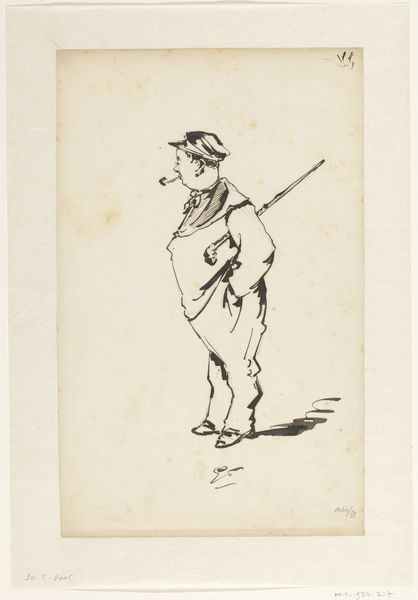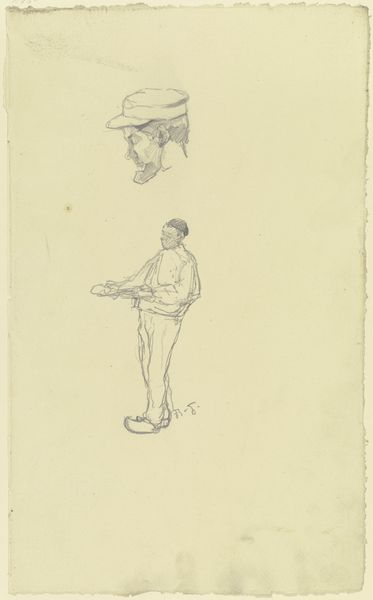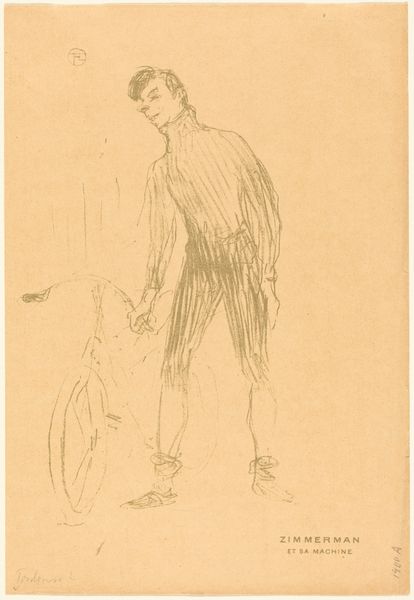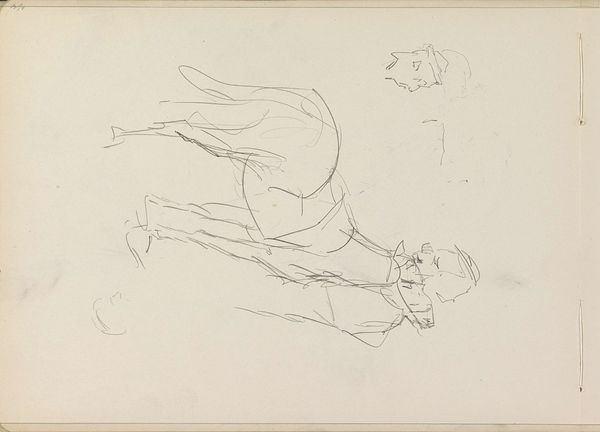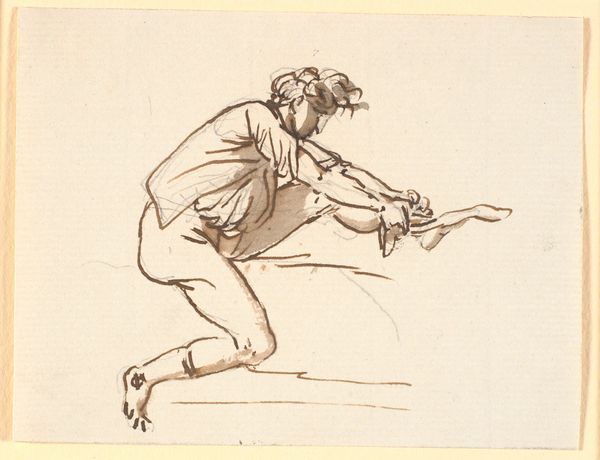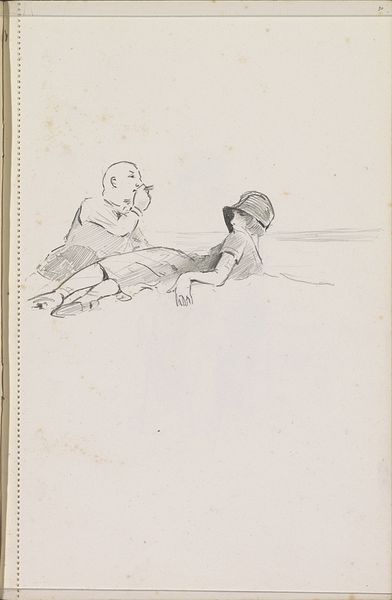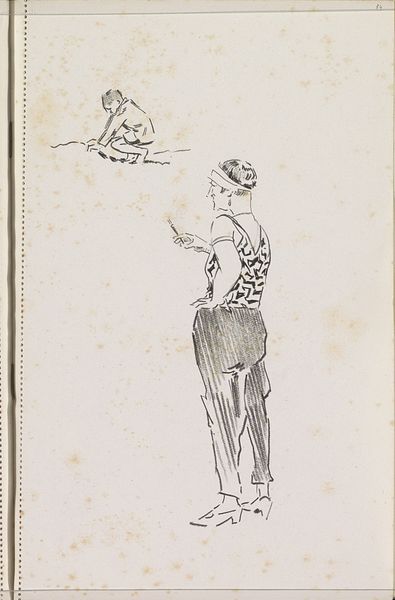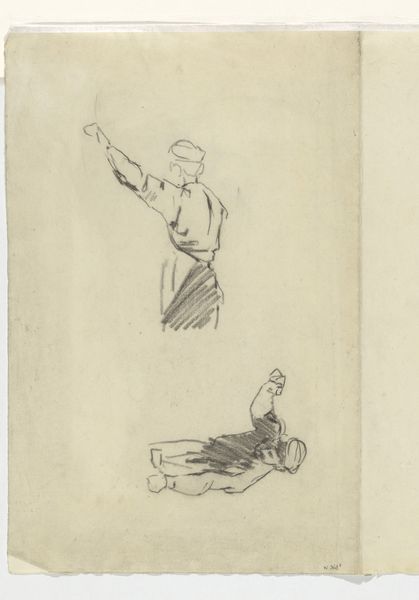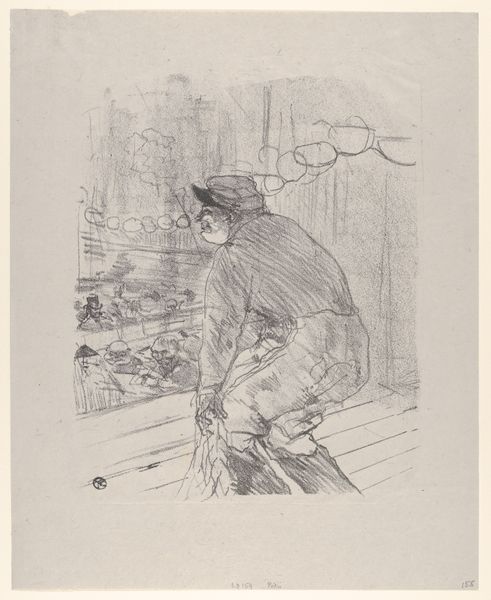
drawing, paper, ink
#
portrait
#
drawing
#
comic strip sketch
#
imaginative character sketch
#
dog
#
cartoon sketch
#
paper
#
personal sketchbook
#
ink
#
ink drawing experimentation
#
sketchbook drawing
#
genre-painting
#
cartoon style
#
storyboard and sketchbook work
#
cartoon carciture
#
sketchbook art
Dimensions: height 206 mm, width 152 mm
Copyright: Rijks Museum: Open Domain
Curator: Gust van de Wall Perné created this work, titled "Jongen met etenswaren en hond," or "Boy with Food and Dog," between 1887 and 1911. It's an ink drawing on paper, currently held here at the Rijksmuseum. Editor: My first impression is that it looks like a preliminary sketch, quite spontaneous. There's a sense of playfulness and dynamism—especially the boy's strange form and the dog jumping at something we can't see. Curator: The context of the time is quite important. Perné worked during a period when there was growing interest in depictions of everyday life, moving away from academic formality. One could see this genre painting as influenced by that movement, where artists explored modern experiences and social observations. Editor: Right, and looking closely, you can see it's less about polished realism and more about conveying energy through minimal means. Notice the quick, almost nervous lines, which speak to its origin as perhaps sketchbook experimentation. Also, those lines wafting upward. What is the artist getting at with that effect? Curator: It definitely captures a fleeting moment. The drawing style reflects the accessibility and growing demand for easily reproducible images—prints and illustrations became increasingly common. This made art accessible to a broader public, far removed from only aristocratic consumers. Editor: Interesting point about accessibility. I see how Perné's deliberate stylistic choice affects the materiality of the work. I am especially interested in what is implied about social classes—such detailed care put into what most artists would discard as preparatory exercises. He’s treating a low or common subject with the highest esteem. Curator: Exactly! The artist presents an informal, intimate perspective on everyday existence. This work reflects how societal values and artistic themes began shifting around the turn of the century. It invites contemplation about how art could connect with daily life and resonate with an expanding audience. Editor: Well, Perné’s process-oriented approach gives insight into the burgeoning importance of not only what an artist makes but how and from what materials the artist brings art into existence. Curator: Indeed, it allows us a glimpse into the creative and cultural climate that embraced informal styles, focusing attention on often overlooked realities and perspectives. Thank you for the fresh, unique reading of the image! Editor: Likewise. Appreciating the piece within a material context helped flesh out the social underpinnings and what such a focus represents.
Comments
No comments
Be the first to comment and join the conversation on the ultimate creative platform.

